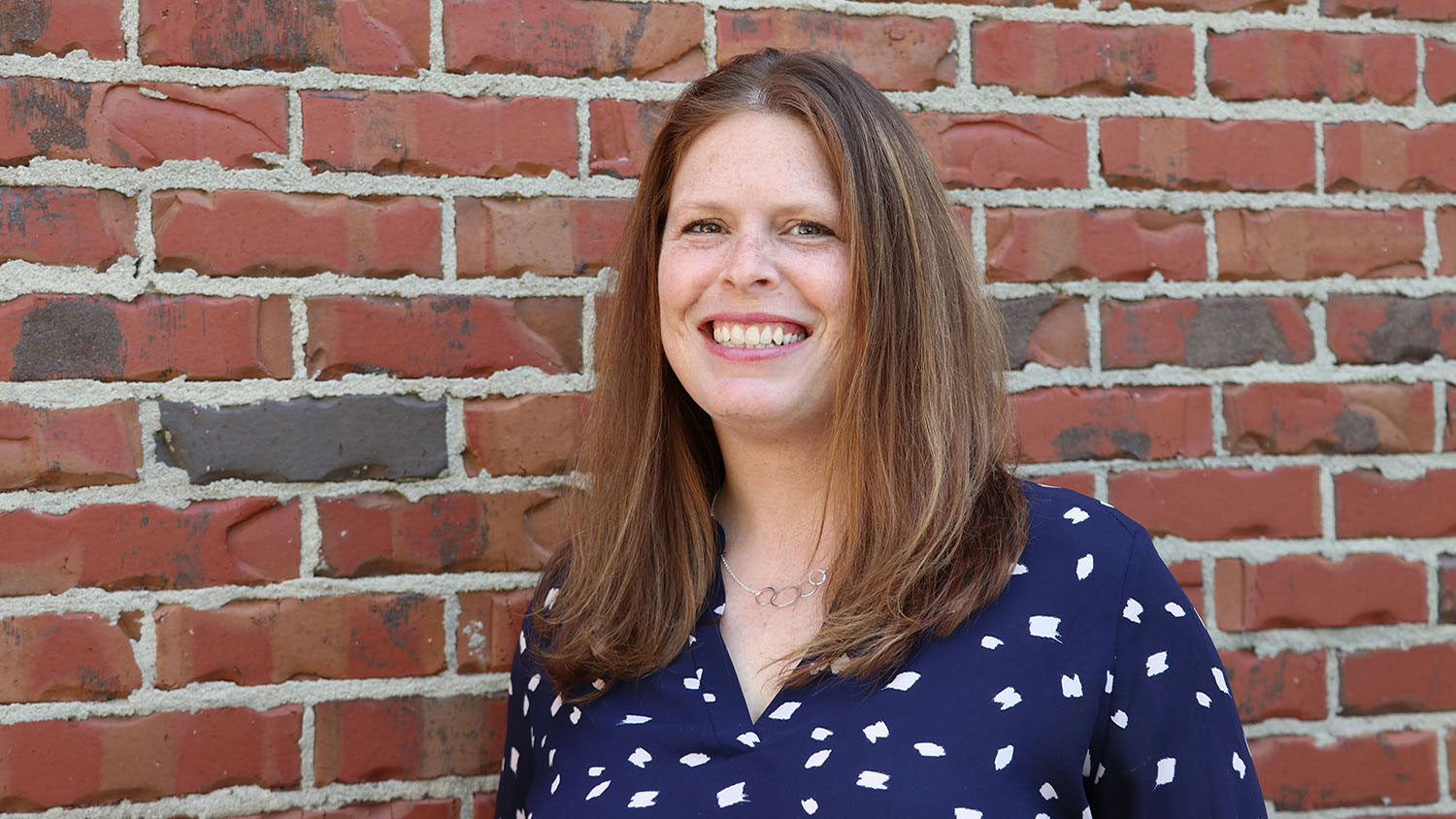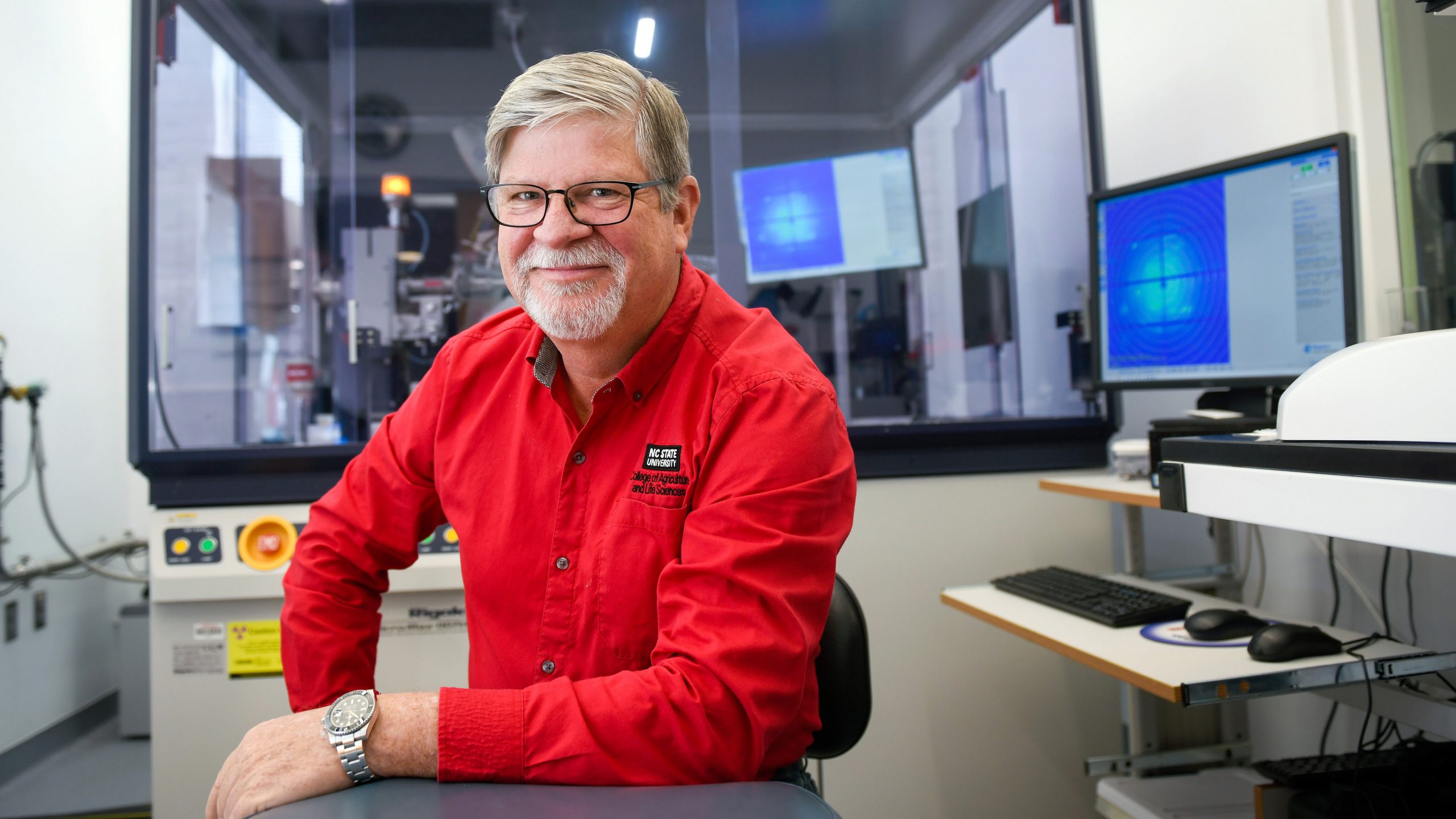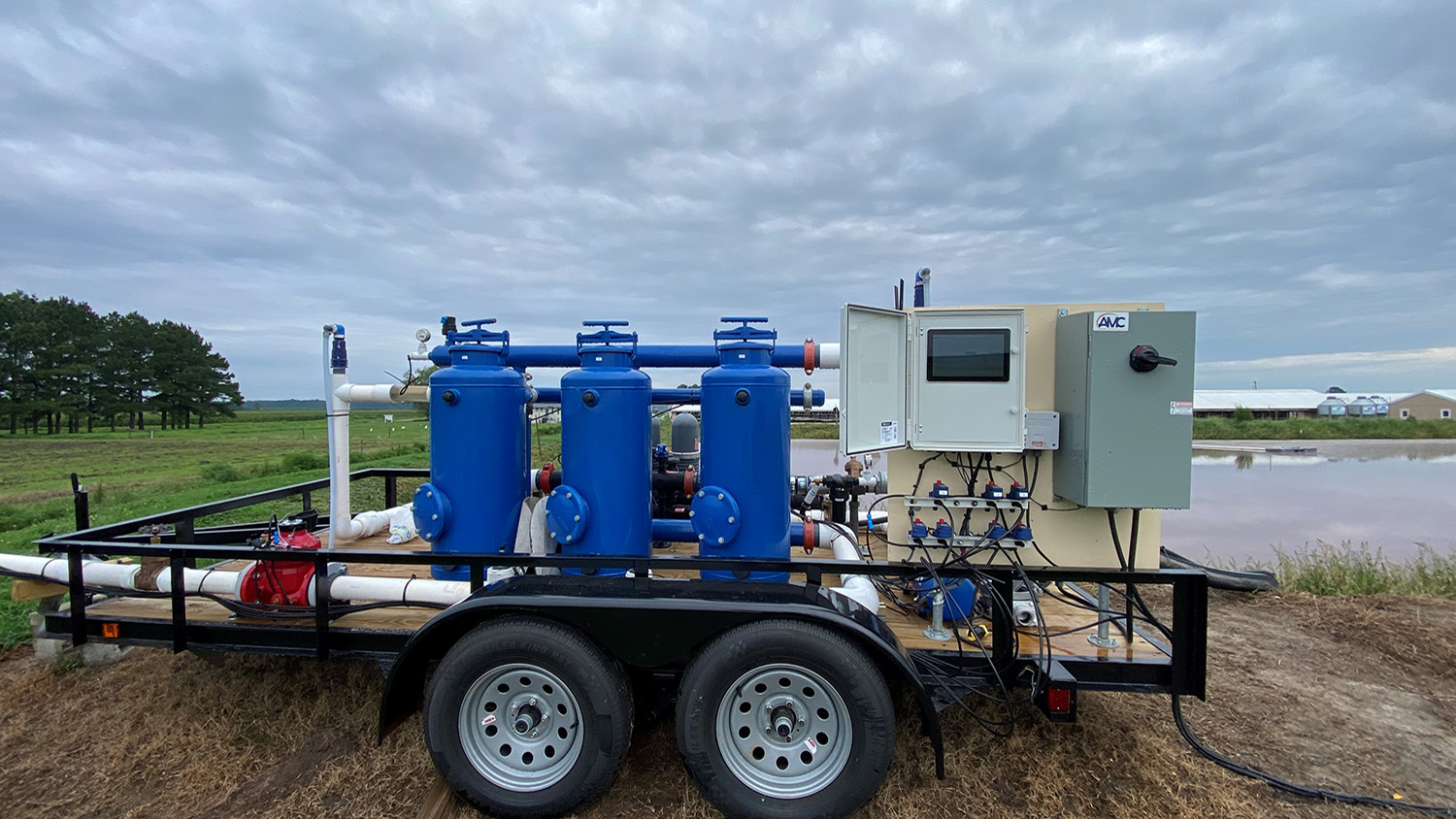Entomologist is State Fair’s giant pumpkin king
As an Extension entomologist at N.C. State University, Dr. Jack Bacheler helps folks grow crops without giving up too much to insects that feast on plants. This year, Bacheler himself has a gardening success story – he is the proud producer of the State Fair’s biggest pumpkin.
Bacheler’s pumpkin, raised in the backyard of his Clayton home, tipped the scales at 799.6 lbs. Since the start of the State Fair on Oct. 17, he has spent a little time in the Exposition Building with the winning pumpkins, telling his story and sharing tips with others. On a recent morning, folks posed for photos and asked Bacheler lots of questions about his pumpkin.
For three years, Bacheler tried his hand at growing big pumpkins, but the first two years he didn’t have much success. Groundhogs attacked his pumpkins, so this year he protected the pumpkins with reinforced fencing.
Bacheler says there is much information available on the Internet on growing big pumpkins. And though the biggest pumpkin raised in the state was over 1,000 pounds, states like Ohio regularly produce pumpkins in the 1,500-pound range.
Bacheler started the pumpkin seeds indoors and transplanted young plants into the garden in May. By late June, the first female flowers were pollinated, and then the real work of raising the pumpkins began. July through September, Bacheler said he spent about an hour and a half every evening tending his pumpkins.
“It made it impossible to even go on vacation,” he said.
Water and fertilizer are keys to producing a big pumpkin, Bacheler said. He used a drip irrigation system to feed the pumpkins with water, fertilizer and pesticides. Starting with good genetic stock also helps – Bacheler said he paid $40 for two seeds from a parent pumpkin weighing 1,500 pounds.
“Pest management is a problem. Insects are my kind of things, so they were easier to deal with. But plant diseases are harder to manage,” he said.
The pumpkin was harvested by a small Bobcat that lifted the pumpkin by straps wrapped around it. Once it was raised, it was placed on a pallet so it could be moved by a forklift.
Before its debut at the State Fair, Bacheler’s pumpkin was weighed at the Yadkin Valley Pumpkin Festival. Getting it weighed early is important because pumpkins will lose weight as they dry, he said.
Bacheler isn’t the first person from the College of Agriculture and Life Sciences to be named a pumpkin king. Wallace Simmons, 4-H agent in Wayne County, is a perennial big pumpkin champion. When he lived in the North Carolina mountains where pumpkins thrive in cooler temperatures, Simmons was a regular winner at the fair. Since moving to eastern North Carolina, he has continued to produce large pumpkins, just not as large as before.
What will happen to the great pumpkin? Bacheler isn’t sure. Simmons has sold some in the past, but he retains the seeds which are for sale at the fair for $1 each.
And Bacheler said he isn’t sure whether he’ll try to raise another champion pumpkin. Despite the time that the pumpkin required, it has left him pondering, “I wonder what I could do next year?”
–Natalie Hampton



